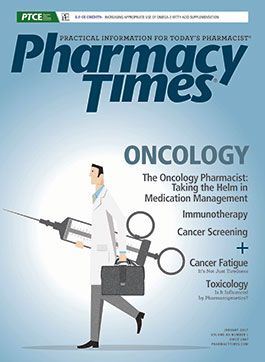Publication
Article
Pharmacy Times
Does Linezolid Interact with Warfarin?
The antibacterial agent linezolid would not be expected to participate in drug–drug interactions via the cytochrome P450 (CYP) system because it does not appear to be a substrate, inhibitor, or inducer of such isozymes.
The antibacterial agent linezolid would not be expected to participate in drug—drug interactions via the cytochrome P450 (CYP) system because it does not appear to be a substrate, inhibitor, or inducer of such isozymes. Warfarin is metabolized by several CYP isozymes, with CYP2C9 being the most important. Thus, theoretically, one would not expect an interaction between linezolid and warfarin. Nonetheless, 2 recent reports involving a total of 22 patients suggested that linezolid increased the anticoagulant response to warfarin. How can we resolve these conflicting conclusions?
Study In Healthy Subjects
In addition to evidence suggesting that linezolid is not involved with CYP isozymes as a substrate, inhibitor, or inducer, a preliminary study in healthy subjects found a slight decrease in international normalized ratio (INR) when linezolid was administered with warfarin.1 The decrease was only about 10%, so the authors concluded that it was unlikely to have a clinically important effect on warfarin therapy.
Reports of Increased Warfarin Effect
The first report was a retrospective study of 6 patients receiving warfarin following cardiac surgery to prevent postoperative thromboembolism.2 The mean INR almost doubled (from 1.62 to 3.00) by day 4 or 5 of linezolid administration for infection. The authors considered the possibility that it was the infectious disease rather than the linezolid that caused the increased INR values, but concluded that it was more likely the linezolid. Nonetheless, a control group of patients who had infections but did not receive linezolid would be required to assess whether the linezolid or the infection increased the warfarin response. In one of our previous columns (June 2009), we described evidence of the increased hypoprothrombinemic effect of warfarin in the presence of infection.
The results of a larger retrospective study were subsequently published. In the study, 16 patients with a left ventricular assist system were receiving warfarin and were subsequently given linezolid for an infection.3 Afterward, the dosage of warfarin was decreased from 3.23 to 2.69 mg/day, leading to only a slight (nonsignificant) increase in the INR—from 3.74 to 4.06. This was reflected in an increase in the warfarin-sensitivity index—from 1.37 to 1.82. The researchers excluded patients with a fever of higher than 38°C, or who took other drugs that interact with warfarin. As with the study described above, however, it is difficult to ascribe the observed effect to linezolid therapy, given the absence of a control group of patients who had infections but did not receive linezolid.
Effect of Infections on Warfarin Response
As we have previously discussed in this column, having an infection, per se, appears to be capable of increasing the response to warfarin. This is thought to be caused by infection-related release of proinflammatory cytokines, possibly with an additional effect of reduced dietary vitamin K intake during an infection. These effects complicate the evaluation of interactions of antibiotics with warfarin because the infection itself may be the cause of the increased hypoprothrombinemic response. This may also explain why many antibiotics have been shown in pharmacokinetic studies to have little or no effect on warfarin, yet there are many published case reports of these same antibiotics causing an increased warfarin response. Note that some antimicrobials, such as co-trimoxazole and fluconazole, do inhibit CYP2C9 and increase the hypoprothrombinemic response to warfarin through a pharmacokinetic interaction.
Summary
Theoretical considerations suggest that linezolid is unlikely to affect warfarin pharmacokinetics, and a study in healthy subjects found a slight decrease in the INR response to warfarin in the presence of linezolid. Two studies in patients found linezolid therapy to be consistently associated with an increased INR response to warfarin. Given that the patient studies could not rule out that it was the infections rather than the linezolid that increased warfarin effect, it would be premature to assume an interaction occurs. Nonetheless, any warfarin-treated patient with an infection, no matter which antibiotic is used, should be closely monitored for increased warfarin response.
Drs. Horn and Hansten are both professors of pharmacy at the University of Washington School of Pharmacy. For an electronic version of this article, including references, visit hanstenandhorn.com.
References:
- Stalker DJ, Jungbluth GL. Clinical pharmacokinetics of linezolid, a novel oxazolidinone antibacterial. Clin Pharmacokinet. 2003;42(13):1129-1140.
- Sakai Y, Naito T, Arima C, et al. Potential drug interaction between warfarin and linezolid. Intern Med. 2015;54(5):459-464. doi: 10.2169/internalmedicine.54.3146.
- Kinoshita S, Wada, K, Matsuda S, et al. Interaction between warfarin and linezolid in patients with left ventricular assist system in Japan. Intern Med. 2016;55(7):719-724. doi: 10.2169/internalmedicine.55.5756.







